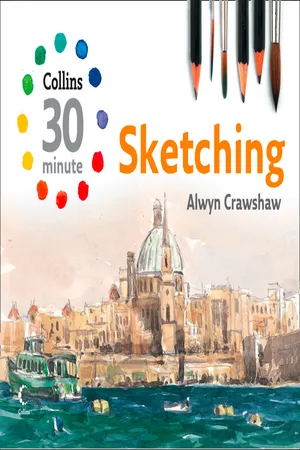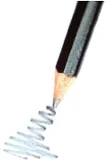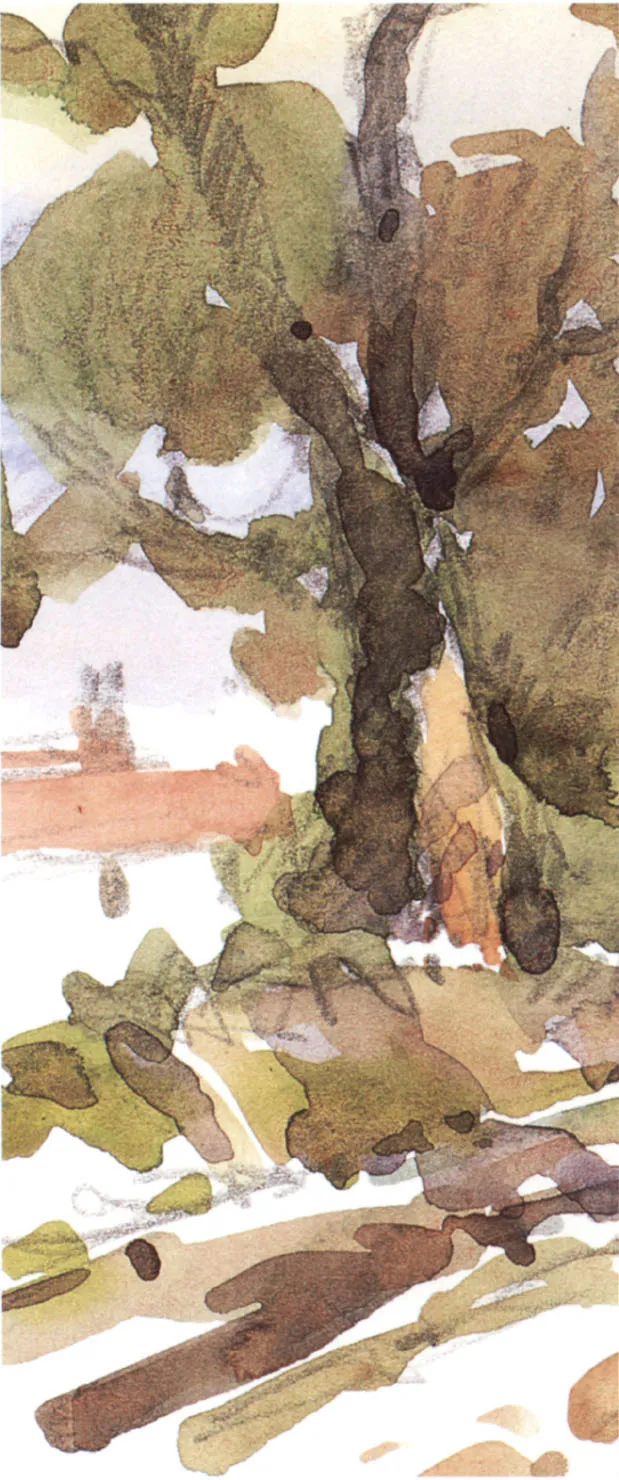![]()
▲ Looking Over Kamoro City, Japan
28 x 40 cm (11 x 16 in)
This was a very big subject, but simplifying the city made it quick to sketch and gave prominence to the power of the mountains.
I have had some of my happiest moments sketching outdoors. What can be better for an artist, whether beginner or professional, than sitting in the countryside watching the clouds drift by, their shadows making wonderful patterns on the distant landscape? The sounds of birdsong, rustling leaves and maybe a stream or river add to the sensory enjoyment and inspire all kinds of subjects for an outdoor sketch.
You don’t need to carry a lot of heavy equipment around with you, and working outdoors gives you the chance to try to conjure up the atmosphere of the day as well as the physical features of the scene.
Working on cartridge paper
One of the good things about sketching on cartridge paper is that it is made for pencil work and therefore is perfect for the purpose. However, it has another great feature: it takes watercolour very well. This means you can sketch a scene in pencil in its own right, but if circumstances change and you have the time you can paint over your drawing and produce a watercolour sketch if you wish.
I normally use an A4 size sketch pad, but if you want to you could work as large as A3 size.
▲ Hickling Church
20 x 28 cm (8 x 11 in)
This finished pencil sketch was drawn on cartridge paper using a 2B pencil.
▲ Hickling Church
20 x 28 cm (8 x 11 in)
I sketched the same subject again on cartridge paper to show how you can paint over a pencil sketch. The brush strokes of the ploughed field lead to the church, giving a sense of recession and showing the flatness of the field. The tree foliage was painted wet-on-wet, allowing colours to mix and merge.
▲ This detail of Hickling Church, reproduced actual size, shows how simply the house, the hedge and the tree were painted. I used my No. 10 round brush for most of this sketch.
Sketching distance
In a landscape subject, where you may be looking far into the distance, you will want to bring that sense of recession to your sketch. In nature, atmospheric haze turns colours in the distance cooler (which is to say bluer) and paler, while warm colours (reds and oranges) are strongest in the foreground. Take advantage of this phenomenon, which is called aerial perspective, in your painting to give depth. For instance, if you paint a red building in the distance, tone it down accordingly so that it doesn’t jump forward in the picture. Take care to make all colours and tones paler as they recede into the distance.
Definition and detail are also lost in the distance, so don’t be tempted to put them in! A tree in the middle distance with more detail than one in the foreground will confuse the eye and lose the recession you are trying to show.
▲ Across the Marshes
20 x 28 cm (8 x 11 in)
In this landscape the old windmill was built of red brick, but I had to tone down its colour so that it didn’t jump forward into the foreground.
▲ In this detail of Across the Marshes, reproduced actual size, you can see that I have put in only the basic form of the cows.
▲ Notice how blue the distant hills of Across the Marshes are, with no detail visible at all.
QUICK TIP
Placing distinguishable objects in the foreground is an effective way of helping to increase the sense of recession in a sketch.
Trees in pencil
In the landscape you will nearly always find trees, so it’s important to practise sketching them. Unless you are working with distant trees, always start at the bottom of the tree and draw upwards. Work in the direction that the branches are growing, too, and remember that they get thinner as you go up the tree.
It’s important to make the tree trunk and the way it grows out of the ground convincing. The three main rules are:
1 Don’t curve the bottom of the trunk like a pantomime tree! This doesn’t occur much in nature.
2...








